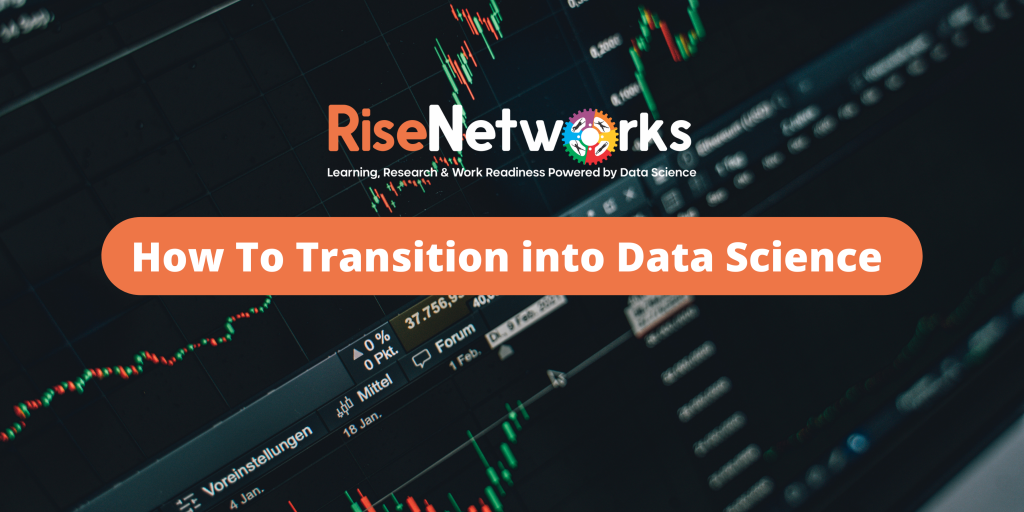INTRODUCTION
Do you want to work in the field of data science? You’ve arrived at the appropriate location.
With outstanding rewards and a variety of jobs in the field, it seems like half of the globe wants to work in data science these days. To keep or go ahead of the competition, businesses are spending extensively on data science skills. You couldn’t have chosen a better time to switch careers than now, as a data science wannabe!
However, this has its own set of difficulties. People frequently seek advice on how to get started in data science. People from all walks of life — IT, Sales, Finance, HR, Healthcare, and so on – are vying for a piece of the data science pie.
Let me quickly put any doubt to rest before we continue, people with zero prerequisites are smoothly transitioning into data science every day and the sector is still understaffed.
Want some proof?
LET’S HEAR FROM PEOPLE WHO TRANSITIONED SUCCESSFULLY
ANDREW JONES
DATA INFINITY
“I’ve been working in this area for over 13 years – and my journey to where I am now is a little bit of an odd one. I didn’t study Data Science, Computer Science, or even Mathematics at University. Instead, I did degrees in Marketing & Psychology, and actually just happened to land my first role as a Marketing Analyst simply through playing cricket with the manager of this team…
I’ve continued learning and moving into different roles in different industries, and in recent times I’ve been fortunate to have worked for Amazon, as well as Sony PlayStation where I built & prototyped Machine Learning based features for the PlayStation 5, several of which have been patented by Sony.
Job descriptions don’t always reflect the reality of what companies need and want – so take them with a pinch of salt.
Anyway, back to the main story…
I’ve talked to a lot of professionals recently – and while many are saying that they’re seeing the rapid growth of Data Science & Machine Learning – they don’t know how to start their learning journey, or how to even get a better grasp of what this all actually means in practice.
They know a move in this direction would be hugely beneficial for their careers, because let’s face it – the world is quickly becoming completely data-driven. If you’re not keeping your eye on these trends then you genuinely run the risk of getting left behind or being overtaken by others who are looking for opportunities to explore these areas, or at least finding ways they can fuse them or add them into their current role”. Read more here
FROM HR TO DATA SCIENCE
ANN RAJARAM
When people hear about employees transitioning from HR to Data Science, they are taken aback, and the typical response is, “Are you serious?” Is there a link between these fields?”
This question is answered by Ann Rajaram. She explains how you may get into data science while still utilizing your valuable “people skills.
Technically, anyone can become a data scientist, assuming you (a) master the programming skills and (b) show potential employers how you can add value.
But if you already have strong experience in HR, then it makes logical sense to leverage that domain expertise, too. For example, a lot of the larger companies use data scientists in the HR domain for “workforce analytics” to understand employee churn, project ROIs, leadership development and to improve diversity metrics.
For example, a lot of the larger companies use data scientists in the HR domain for “workforce analytics” to understand employee churn, project ROIs, leadership development and to improve diversity metrics.
Not saying that you cannot pivot 100% to a completely different domain, just that it would be hard to start from scratch without either domain knowledge or serious technical chops. Occasionally, salaries at entry-level data scientist roles might be a step down for someone who has 7–10 years of corporate or managerial experience.
Models used for workforce analytics would also translate well to universities and educational/behavioural health institutions since these are all domains requiring “people skills” and a strong understanding of behavioural psychology. For example, large universities use analytics from learning management systems to (a) intervene for students at-risk of failing, (b) create personalized student paths, or (c) even update curriculum to spend more time on syllabi where a large majority of students trip or struggle.
The AI and ML Blackbelt+ come with the guidance of an expert mentor who will customize the learning path specifically for you. Coming from an HR background and don’t know where to start? AI and ML Blackbelt + program can help you there.
There you go! what are you waiting for? Your dream can be achieved in 100 days! Contact us today.

